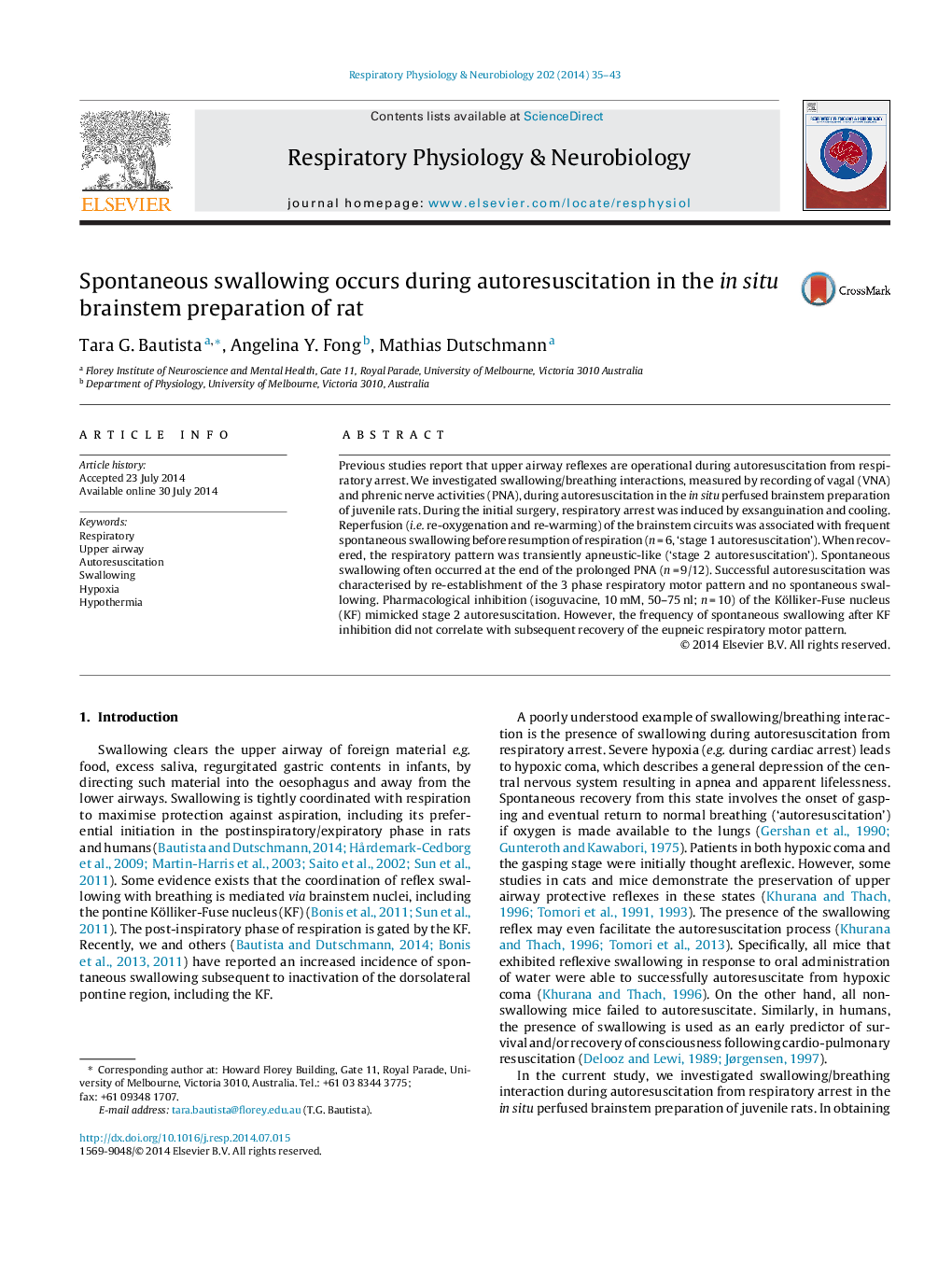| Article ID | Journal | Published Year | Pages | File Type |
|---|---|---|---|---|
| 2846907 | Respiratory Physiology & Neurobiology | 2014 | 9 Pages |
•Swallowing is consistently seen during autoresuscitation.•Swallowing emerges before respiratory activity during autoresuscitation.•Swallowing does not directly correlate with complete recovery of a eupneic 3 phase respiratory pattern.
Previous studies report that upper airway reflexes are operational during autoresuscitation from respiratory arrest. We investigated swallowing/breathing interactions, measured by recording of vagal (VNA) and phrenic nerve activities (PNA), during autoresuscitation in the in situ perfused brainstem preparation of juvenile rats. During the initial surgery, respiratory arrest was induced by exsanguination and cooling. Reperfusion (i.e. re-oxygenation and re-warming) of the brainstem circuits was associated with frequent spontaneous swallowing before resumption of respiration (n = 6, ‘stage 1 autoresuscitation’). When recovered, the respiratory pattern was transiently apneustic-like (‘stage 2 autoresuscitation’). Spontaneous swallowing often occurred at the end of the prolonged PNA (n = 9/12). Successful autoresuscitation was characterised by re-establishment of the 3 phase respiratory motor pattern and no spontaneous swallowing. Pharmacological inhibition (isoguvacine, 10 mM, 50–75 nl; n = 10) of the Kölliker-Fuse nucleus (KF) mimicked stage 2 autoresuscitation. However, the frequency of spontaneous swallowing after KF inhibition did not correlate with subsequent recovery of the eupneic respiratory motor pattern.
